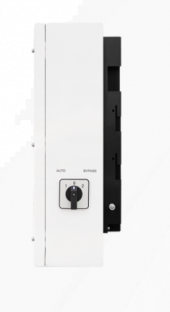I've just had my solis hybrid inverter installed RHI-6k-48ES-5G, but am still waiting for my batteries to arrive (September I hope !)
I have installed a lighting circuit and fridge freezer on the AC back-up circuit which should operate from the battery when the grid is down to provide some power to the house on this circuit during a power cut.
I was surprised last night to find that the inverter switched off completely when it went dark, taking with it the back-up circuit and fridge freezer. No response from the inverter front panel. Thought the inverter was defective as the electrician had literally only turned it on a few hours previously, only to find that it was back alive in the morning .
.
After some head scratching it seems that this is the correct operation for the inverter. If there is no DC solar, or DC battery it will turn itself off, but taking with it the AC back-up circuit !
I find that really surprising as I would have expected that if the grid is still on then the AC back-up circuit would just be grid powered ?
It also implies that when my batteries arrive, if I have any battery problem then the AC back-up circuit will die at night. That seems far more likely than a grid outage in the UK and defeats the point of using AC-backup !
I can't seem to find any option on the inverter panel which would fix this, but quite frankly the manual is a hard read !
Is anyone familiar with this inverter and can confirm if I am missing something or this is indeed the intended operation ?
Thanks in advance.
I have installed a lighting circuit and fridge freezer on the AC back-up circuit which should operate from the battery when the grid is down to provide some power to the house on this circuit during a power cut.
I was surprised last night to find that the inverter switched off completely when it went dark, taking with it the back-up circuit and fridge freezer. No response from the inverter front panel. Thought the inverter was defective as the electrician had literally only turned it on a few hours previously, only to find that it was back alive in the morning
After some head scratching it seems that this is the correct operation for the inverter. If there is no DC solar, or DC battery it will turn itself off, but taking with it the AC back-up circuit !
I find that really surprising as I would have expected that if the grid is still on then the AC back-up circuit would just be grid powered ?
It also implies that when my batteries arrive, if I have any battery problem then the AC back-up circuit will die at night. That seems far more likely than a grid outage in the UK and defeats the point of using AC-backup !
I can't seem to find any option on the inverter panel which would fix this, but quite frankly the manual is a hard read !
Is anyone familiar with this inverter and can confirm if I am missing something or this is indeed the intended operation ?
Thanks in advance.
Last edited:




